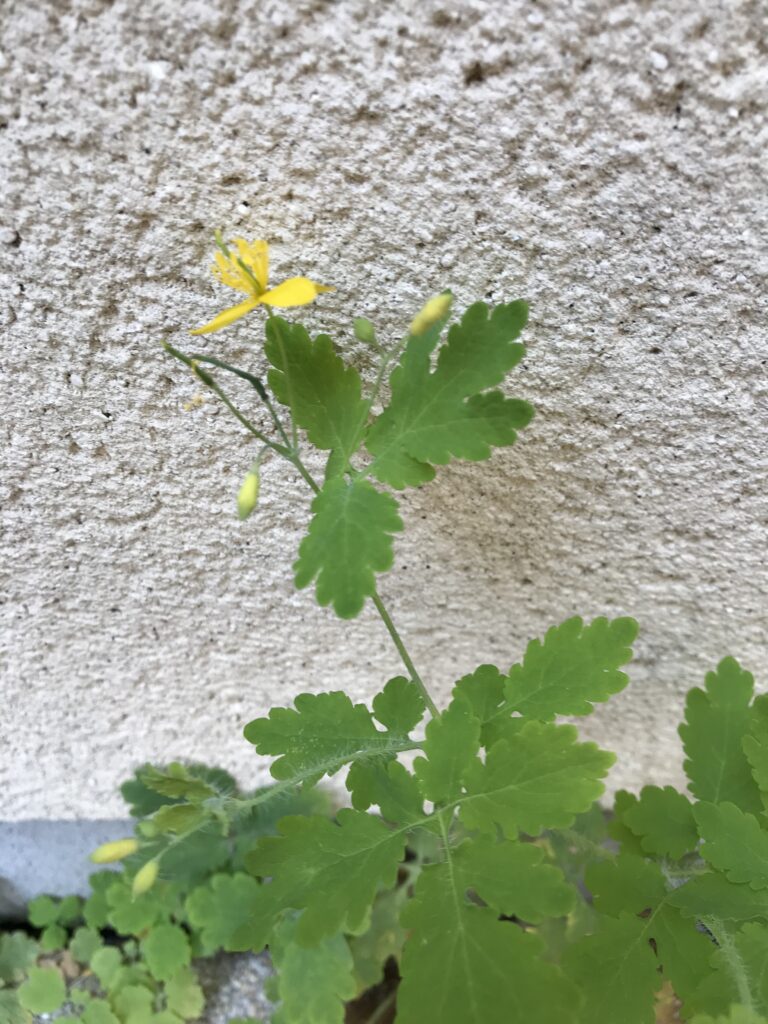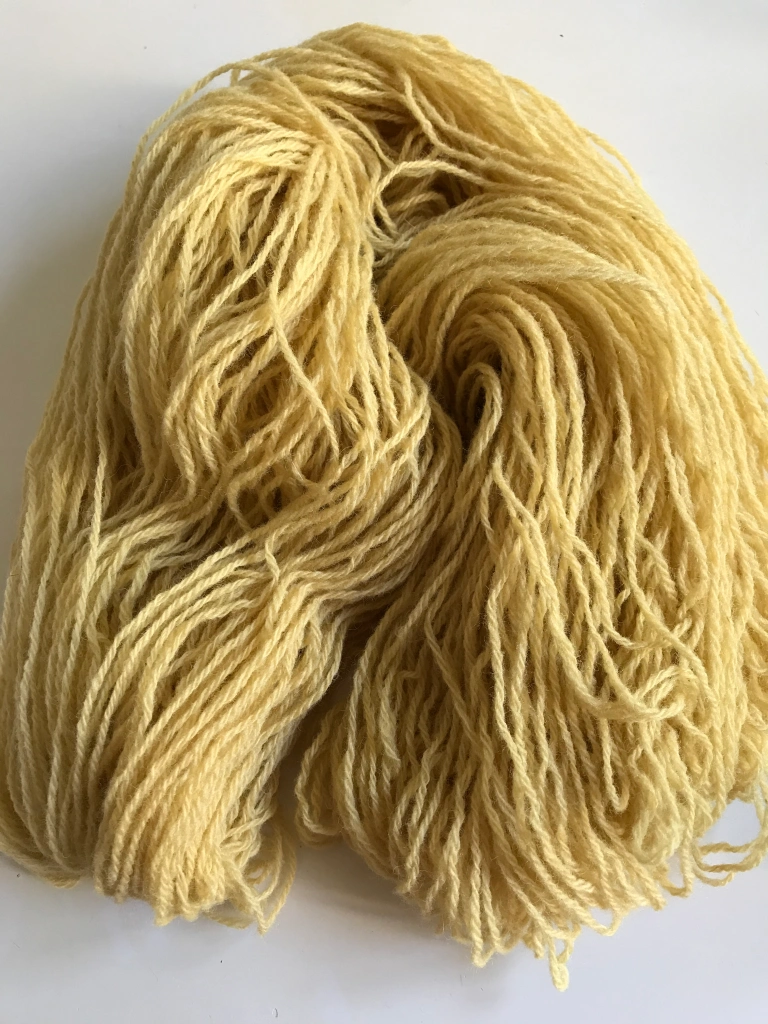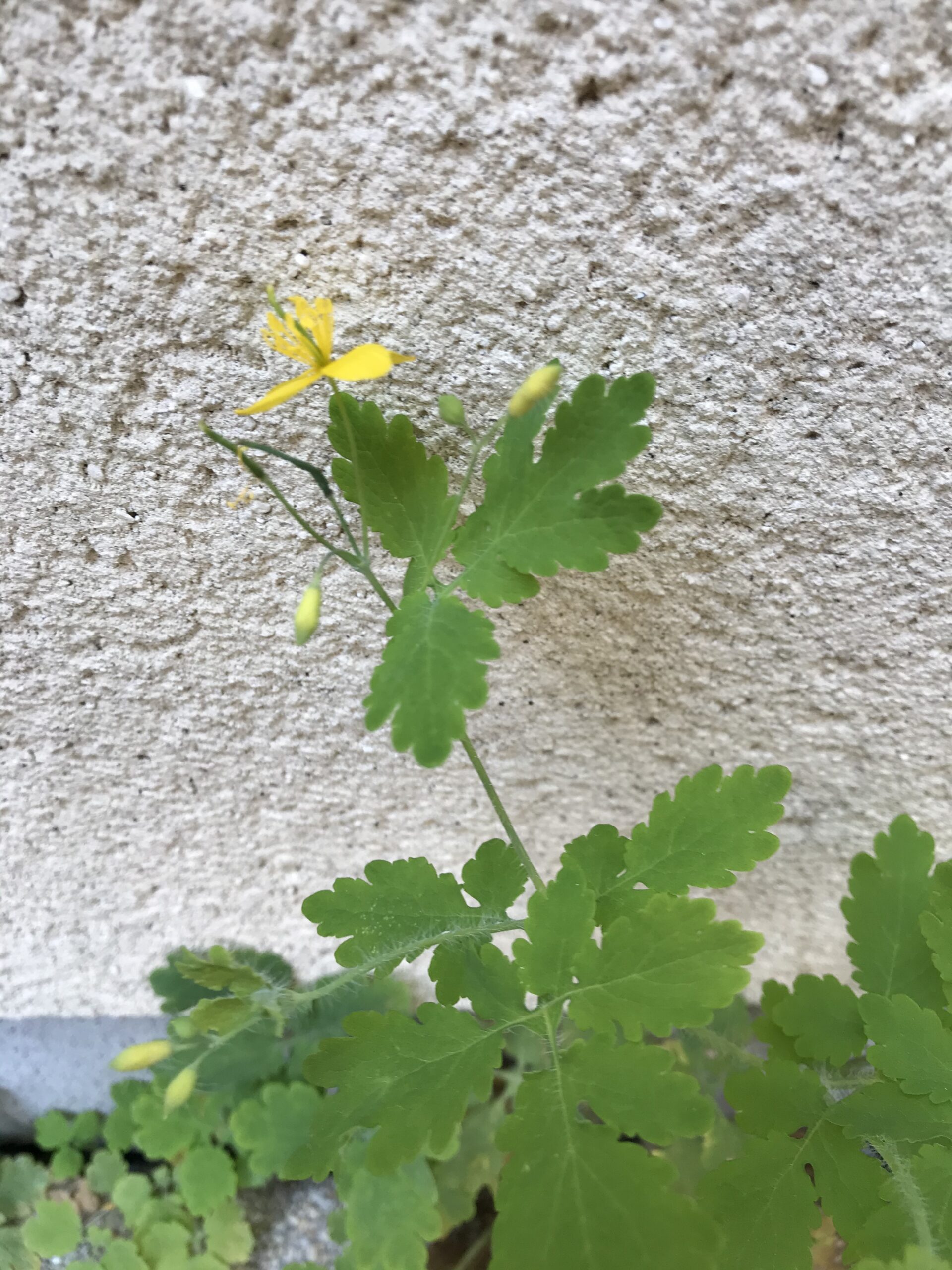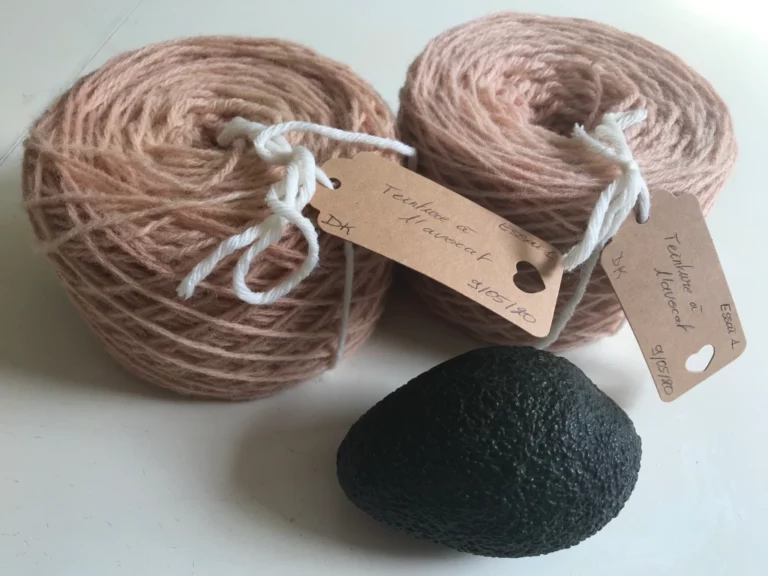This plant appeared alone in my garden, in the spaces of a dry stone wall and even against the wall of my house.
Some people think it's a weed, but don't pull it out! Its orange juice, applied to a wart, makes it disappear in a few applications. It is the tenacious side of the color of this juice which gave me the idea of using it as a dye.
After checking, I am not the only one and an ancient text refers to it. So I picked 300g of this plant (wearing gloves of course) and made a decoction for one hour at a very low boil.
I filtered after cooling. The wool was mordanted with alum, then I dipped it in the dye bath. I heated everything to 85-95 degrees for an hour and let it cool to 30 degrees before rinsing again at the same temperature.
And here is the pretty straw yellow that I got!

This plant appeared alone in my garden, in the spaces of a dry stone wall and even against the wall of my house.
Some people think it's a weed, but don't pull it out! Its orange juice, applied to a wart, makes it disappear in a few applications. It is the tenacious side of the color of this juice which gave me the idea of using it as a dye.
After checking, I am not the only one and an ancient text refers to it. So I picked 300g of this plant (wearing gloves of course) and made a decoction for one hour at a very low boil.
I filtered after cooling. The wool was mordanted with alum, then I dipped it in the dye bath. I heated everything to 85-95 degrees for an hour and let it cool to 30 degrees before rinsing again at the same temperature.
And here is the pretty straw yellow that I got!

My next step was to harvest and dry all the celandine from the garden in preparation for winter dyeing. Will I be able to get the same color with the dry plant? To be continued...




